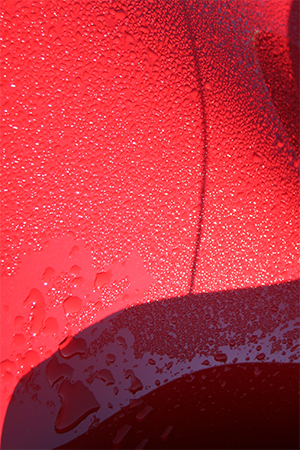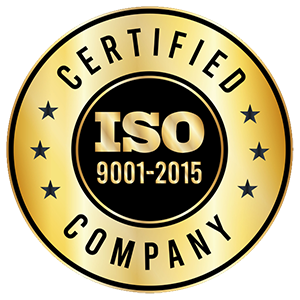What are these types of engineered coatings and what are is the difference between them?
Hydrophobic Coatings

Hydrophobic coatings are a type of engineered coating specifically designed to repel water. They are formulated from materials that “hate water”. When you apply water to this type of coating, the water will separate into dome-shaped individual droplets.
Being hydrophobic can be thought of like this: if you add mineral oil to water, you will see two layers begin to form. The top layer will consist of mineral oil, and the bottom layer will contain water. Since they do not naturally mix, mineral oil is hydrophobic.
If a chemist wishes to produce a hydrophobic coating, they will use polymeric-based materials in which the polymer backbone is created from naturally hydrophobic materials. For example, the backbone of polyolefin polymers is naturally hydrophobic. A chemist might utilize polypropylene as the key component in a hydrophobic coating.
Superhydrophobic Coatings
The difference between a hydrophobic coating and a superhydrophobic coating is a matter of degree, literally! It is generally accepted that when water is applied to a superhydrophobic surface, the water will separate into droplets, like in the case of hydrophobic coatings. However, these droplets will not only be domed shaped, but they will also have a contact angle of greater than 150 degrees. When considering that a perfect sphere will have a contact angle of 180 degrees, you can begin to recognize that these droplets will look like tiny balls. More importantly, these tiny balls do not “wet” the surface they are on, they simply roll off.
In order to achieve a superhydrophobic surface, also known as ultrahydrophobicity, a coating will need to accomplish two objectives. First, it will have to be formulated with very hydrophobic materials. Second, it will need to have a degree of surface texture or micro-roughness. When properly designed, this creates a property known as the lotus effect, named for the leaves of the lotus flower. Because the lotus plant leaves have superhydrophobic properties, water rolls right off them, taking dirt particles with it.
When designing a hydrophobic coating, experience matters
At National Polymer, expert chemists engineer hydrophobic coatings that are specifically created to meet our client’s requirements. We design and manufacture hydrophobic and superhydrophobic coatings that cure through a variety of methods including thermal, light, oxygen, and chemical means. And we build our coatings using silicone and fluoropolymer-based technologies and others including high performance systems such as silazanes and ceramers.
Chemists at National Polymer have been designing custom coatings for over a decade and have produced custom products for the automotive, marine, aerospace, electronics, and medical industries.
To find out more about how National Polymer can help fulfill your hydrophobic and superhydrophobic coating requirements, contact us at 1-800-679-0477 for a no cost, no obligation consultation about your specific coating needs.
For more information on hydrophobic coatings, checkout this page on our website.


